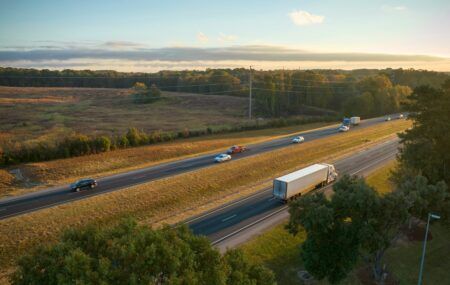With concerns over vehicle emissions playing an increasingly important role in future transportation and city planning issues, new software developed by EarthSense Systems has been used to assess how trees affect urban air quality on one of London’s most polluted streets.
Scientists at EarthSense who specialize in air quality monitoring systems integrated road, building and tree data to create an accurate 3D model of the Marylebone area of London in the UK. Recorded pollution levels were combined with traffic flow data from the Department for Transport (DfT) and meteorological information from London City Airport, to calculate pollution concentrations and investigate different tree scenarios. Called FluidAir, the state of the art solution uses computational fluid dynamics (CFD) to simulate the flow and dispersion of pollutants within complex 3D surroundings, such as city streets.
According to EarthSense scientists, the analysis of the CFD results, created using FluidAir, and the data monitored at the Marylebone site, shows that trees should be considered as a mitigation measure where streets run parallel to the prevailing winds. However, they also concluded that trees may exacerbate pollution trapping for wind directions perpendicular to the street canyon orientation, and additional planting would not improve air pollution in this situation. The effect of trees on pedestrians was also investigated, and it was found that the introduction of trees in the street slightly changes the distribution of concentrations.
EarthSense Systems is a joint venture between aerial mapping company Bluesky and the University of Leicester, and aims to deliver products that enable policy makers and planners to access real-world information, visualize, and support decision making on air quality issues.
With a mix of hardware (air quality sensors), software (bespoke modeling), and data (derived and complementary), the company aims to deliver high value information to a range of decision makers. EarthSense has already undertaken a range of air quality monitoring projects, including trials of an airborne air quality mapper, and mobile mapping with air quality sensors mounted in electric cars. Future plans include the establishment of a nationwide network of air quality monitoring sensors, feeding live data for real-time predictions.
“Air pollution is the world’s largest single environmental health risk. Globally it costs £3tn-£5tn (US$3.75tn-US$6.25tn) per year, affects 92% of the world’s population, and is associated with more than three million deaths per annum. In the UK alone, the economic cost of air pollution is estimated at £54bn (US$67bn), and 29,000-40,000 people are thought to die prematurely from its effects,” commented Antoine Jeanjean, head of modeling at EarthSense.
“With an increasing trend of urbanization, our understanding of air pollution distribution has to increase and data collection and modeling must be used intelligently to aid key decisions and mitigation strategies. Put simply, this study confirms previous findings that street air quality is altered by trees in many different ways depending on street geometry, wind speed and direction and sampling height. Using FluidAir for these studies improved the processing time and allowed for the inclusion of a wider range of data and, as a result, more detailed and in-depth analysis.”




